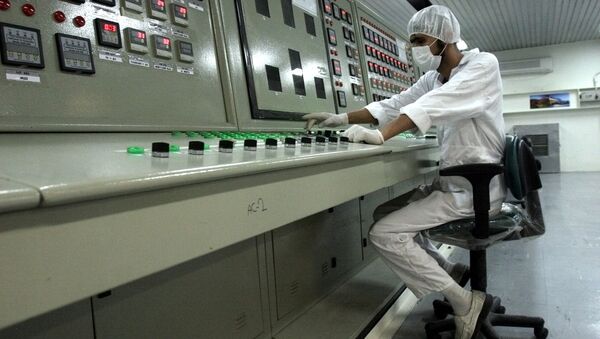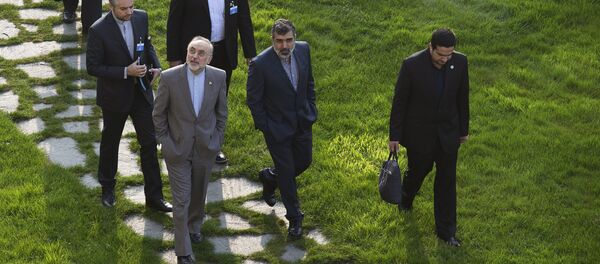The deal would permit Iran to run the centrifuges at its Fordo facility. Iranians would be prohibited, however, from work that could lead to an atomic bomb, and the site would be subject to international inspections, Western officials familiar with details of negotiations told the Associated Press.
In return, Iran would be required to scale back the number of centrifuges it runs at its Natanz facility, along with other restrictions on nuclear-related work.
The deal would ban the Iranian use of uranium, which can be enriched to be the core of a nuclear weapon. An additional US measure would limit the number of centrifuges to less than that needed to produce enough uranium to create a weapon within a year – the minimum time-frame that Washington and its negotiating partners demand.
Experts, however, say the compromise would allow Iran to operate at a sensitive facility using technology that the US wanted removed altogether, technology that quickly could be repurposed for uranium enrichment.
The site at Fordo, which is dug deeply into a mountainside, would be resistant and possibly impervious to an air attack, which neither Israel nor the US has ruled out in case the talks fail.
Tehran denies nuclear weapons ambitions, saying it wants to enrich only for energy, scientific and medical purposes. However, Iran has yet to satisfy questions about its past possible nuclear-related military activity.
US Secretary of State John Kerry and Iranian Foreign Minister Mohammed Javad Zarif have until the end of March to reach an outline of an agreement that would grant Iran relief from sanctions in exchange for scaling back its nuclear program. The deadline for a final agreement is June 30.
Officials familiar with the negotiations told the AP that the potential compromise on Fordo is just one of several options, all of which are designed to keep Iran at least a year away from producing an atomic weapon for the life of the 10-year agreement.




